
[224] Mareca penelope, Wigeon
Introduction
Mareca penelope, the Wigeon, is a duck commonly seen in Britain as a Winter visitor. Until recently it was classified as Anas Penelope.
There are three types of Mareca called Wigeon so Mareca penelope is the Eurasian Wigeon.
Taxonomy
Phylum – Chordates
Class – Aves (Birds)
Order – Anseriformes (Waterfowl)
Family – Anatidae (Ducks, Geese and Swans)
Subfamily – Anatinae (Dabbling ducks)
Tribe – Anatini (Extant dabbling ducks)
Genus – Mareca (Wigeon and Gadwall)
Scientific Name -Mareca penelope
Originally known as Anas Penelope until recently.
Name
Wigeon (sometimes spelled as widgeon) comes from Old French vigeon or vingeon, from vignier, to whine or to shout, from its whistling call.
Mareca comes from Portuguese marreca, wild duck.
In Greek mythology Penelope was the wife of Odysseus (Ulysses in Roman mythology.) Hesychius of Alexandria, c 500 BC, included Penelope as some kind of seabird, possibly linked to this Penelope, and Linnaeus arbitrarily assigned the name to the Wigeon, originally Anas penelope, in 1758.
Note that modern taxonomic usage does not capitalize proper names as species epithets just as it does not capitalize (Latinized) country names.
Description
The male bird has a grey back and flanks, pink breast and a chestnut brown head with a creamy yellow central stripe. Its tail is black with white breast and rear flanks. The speculum, often not visible, is dark green.

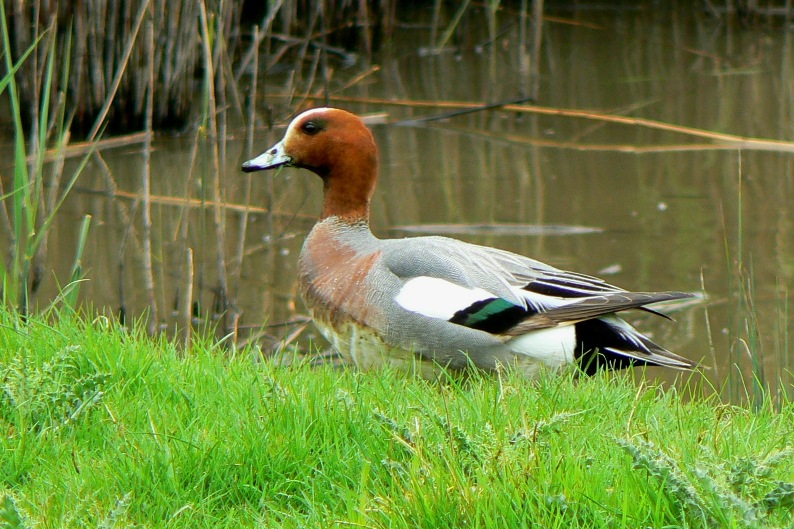

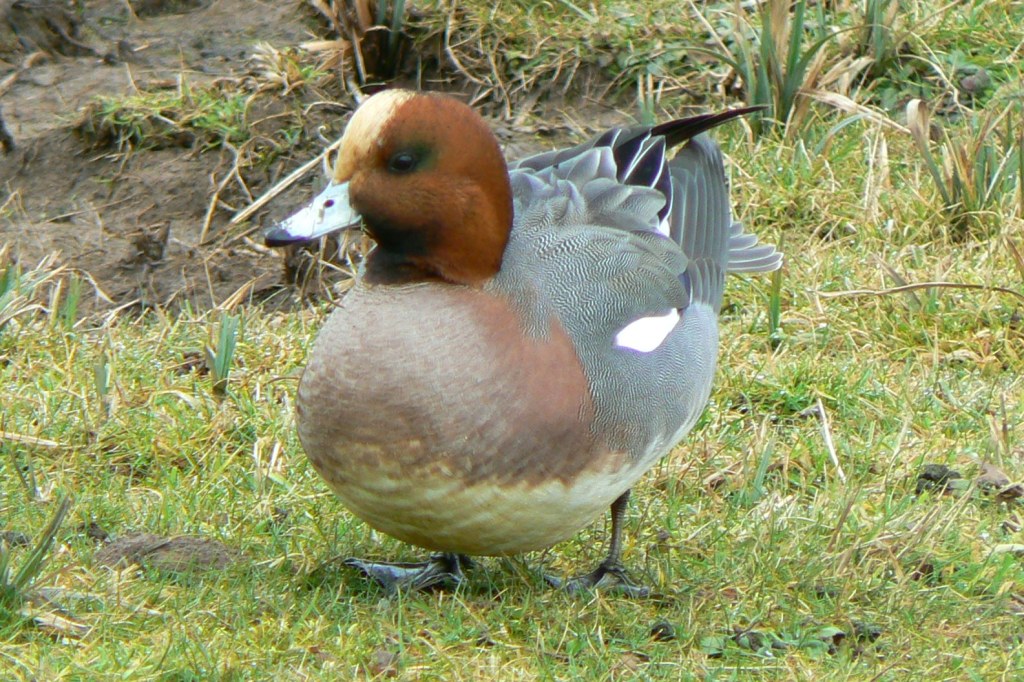
The female is orange brown on her sides, dark mottled brown on her back and tail, with a dull brown head. In eclipse the male looks very similar to the female but retains the white wing marking.
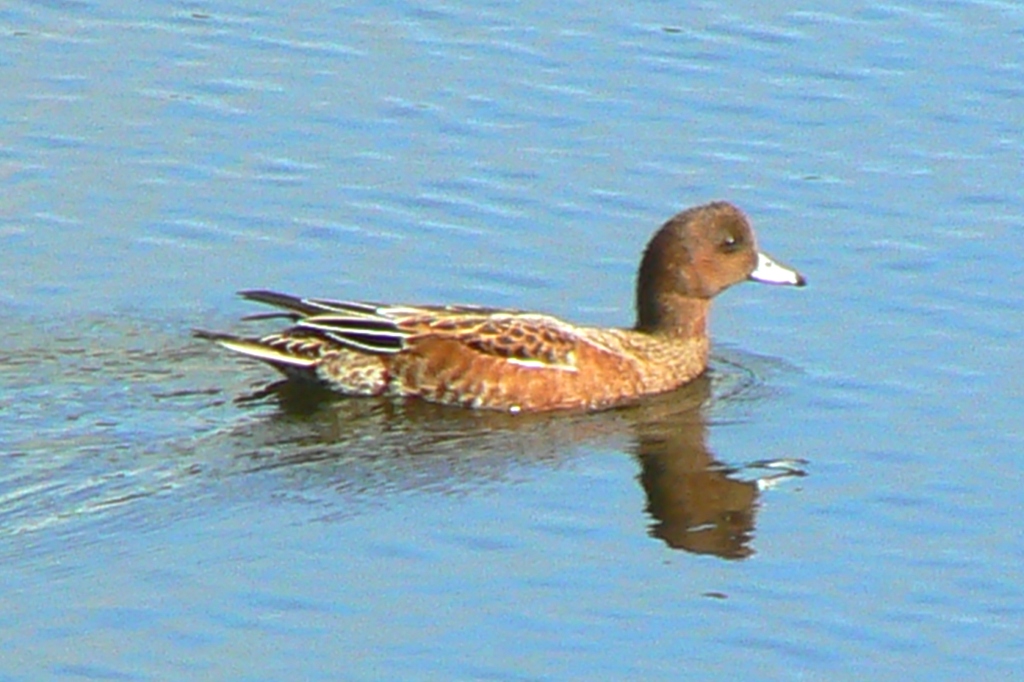





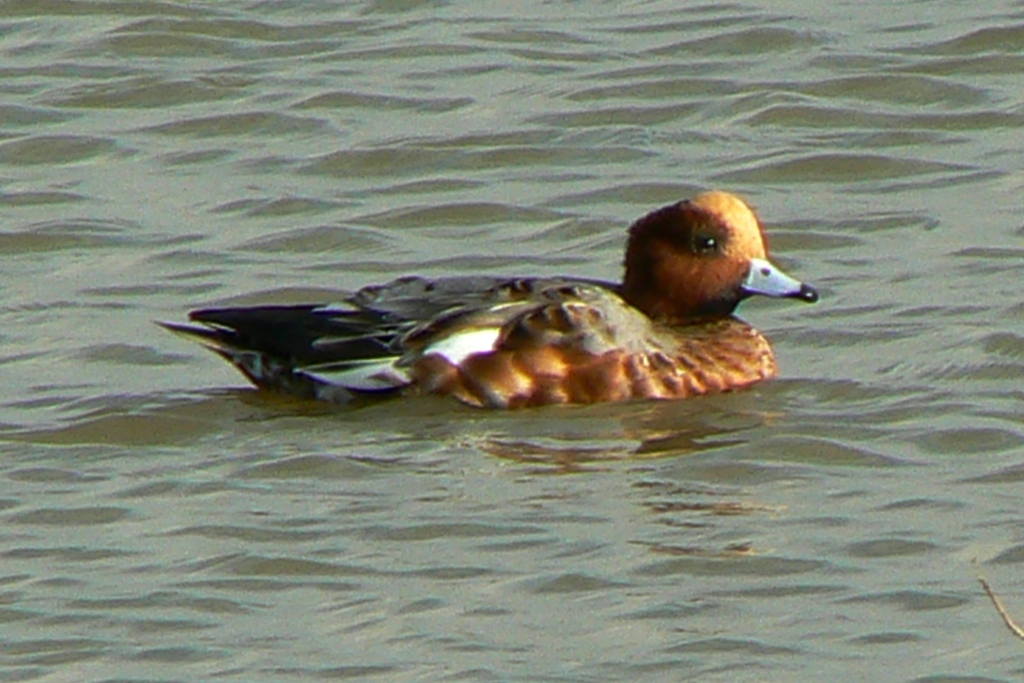
The following two pictures show a mixture of male and female. (See also the header picture.)

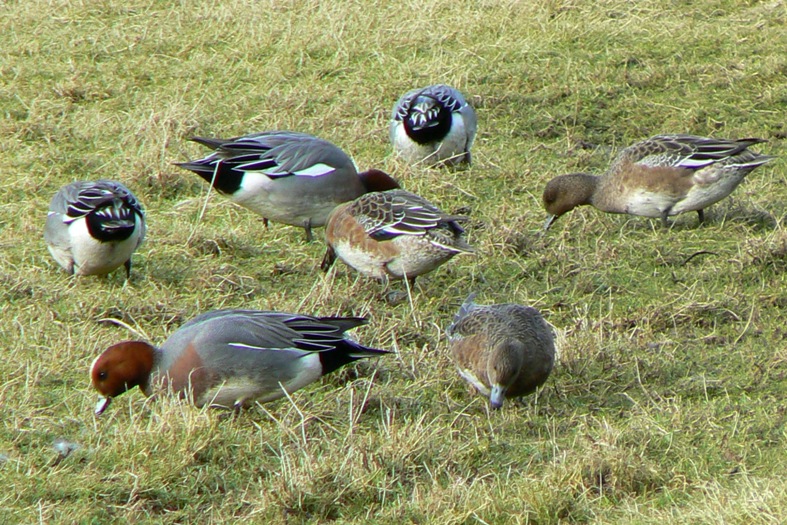
They feed by dabbling for submerged plant food or grazing rapidly on grassland besides water.
Outside the breeding season they are very gregarious and form large flocks.
Habitat and use
The Eurasian Wigeon breeds in the northern parts of Europe and Asia including the far North of Scotland and sometimes parts of North England. In winter it migrates to North-eastern Africa, the Far East of Asia and all of the British Isles.
(The two other species of Wigeon are found in North America.)
It is found in wetlands or marshy areas.
Other Notes
Wigeon are generally seen at Slimbridge as winter visitors. They are gregarious and spend most of their time on the waterside grass, eating. The flocks are generally noisy with their familiar whistling calls. They don’t often come near enough for good pictures.
See also
See [225] Gadwall, coming tomorrow.
